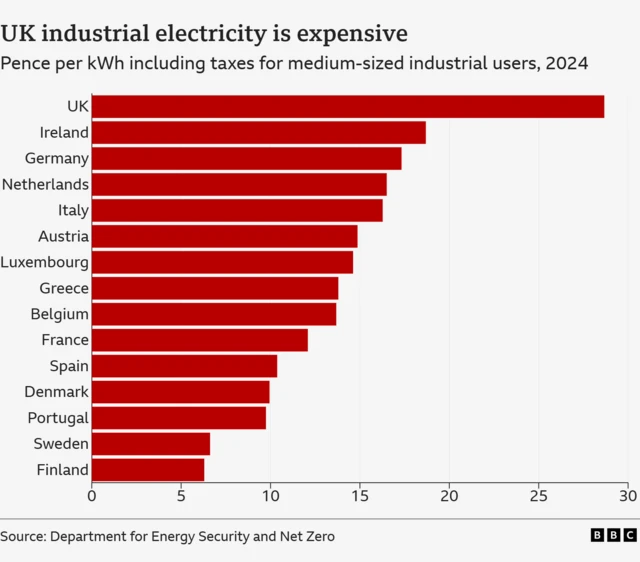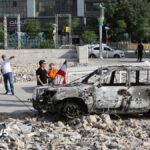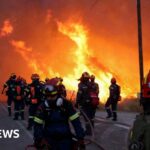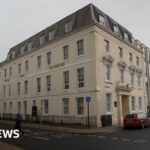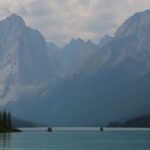
BBC Verify senior journalist
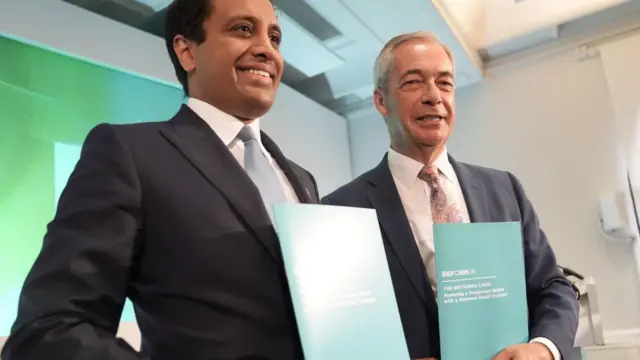
Earlier we discussed Reform UK’s proposal to charge non-doms a one-off £250,000 fee to avoid certain UK taxes, with the proceeds going to people on the lowest incomes.
Reform argues the policy will attract people to the UK and raise money for the government.
However, the Institute for Fiscal Studies (IFS) think tank says it’s “far from clear” if it would be a revenue raiser.
“Much depends on how many of those paying the £250,000 fee would have been in the UK anyway and how many come to (or stay in) the UK in response to Reform’s policy”, says IFS senior economist Stuart Adam.
Arun Advani, director of the Centre for the Analysis of Taxation, says the Office for Budget Responsibility (OBR) – the government’s independent forecaster – expects existing non-dom policies to raise £33.9bn over the next five years.
He believes Reform’s one-off, up front fee would pose a risk to this and points to research suggesting high-income foreigners are more likely to leave in response to high taxes in their first five years in the UK.
“In the first four or five years people are settling, they are building a network. They are less willing to pay an up front cost if they don’t know if they’re going to stay here,” he says.
Reform UK’s Zia Yusuf told Radio 4’s World At One that the OBR’s assessment is “obviously wrong”.
“They [OBR] baked in 1.5% of the non-dom population leaving each year,” Yusuf said. “So far you’ve had more than 10% of the population leave in 10 months.”

BBC Verify senior journalist
Reform leader Nigel Farage has proposed a ‘Britannia Card’ that would allow wealthy foreigners to live and work in the UK without having to pay tax on their foreign wealth, income or gains in exchange for a one-off £250,000 fee.
Non-doms are UK residents whose permanent home, or domicile, for tax purposes is outside the UK and they don’t have to pay tax on money they earned abroad.
Reform’s proposal comes in response to changes the Labour government made to the group when it decided to abolish this tax status from April (with a transition phase).
Reform says its proposal would raise between £1.5bn and £2.5bn – which would be distributed to the lowest 10% of full‑time workers.
Reform estimates the payment could be worth £600 to £1,000 each year, based on an annual Britannia Card uptake of 6,000 to 10,000.
The party says its non-dom policy would attract people to the UK and would boost government revenues. Critics of the scheme say it would end up costing the government money.
BBC Verify is currently taking a closer look at the policy and its costings, but you can continue reading about non-dom rules in the UK.
Marco Silva
BBC Verify senior journalist
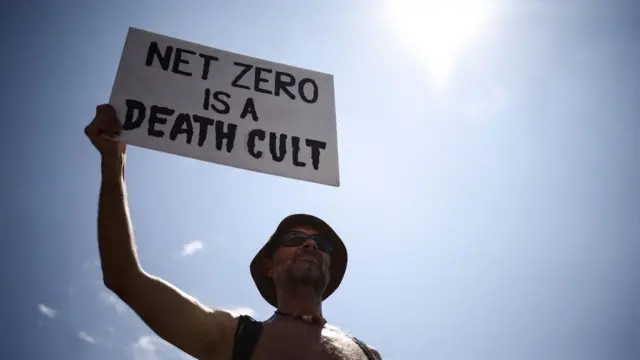
The mayors of London and Paris have said climate-friendly policies like traffic reduction schemes or low-emission zones have become the target of “co-ordinated, well-funded” online disinformation campaigns.
Writing in the Guardian today, Sir Sadiq Khan and Anne Hidalgo say they “will not be intimidated” by what they describe as a “tide of disinformation” targeting policies that, for example, aim to make air cleaner or reduce car use.
Social media posts wrongly linking such policies to supposed plans to limit people’s freedom of movement have often been promoted by accounts with a history of spreading disinformation.
BBC Verify has previously covered how the concept of “15-minute cities”, where people can access all basic services within a short walk or bike ride of where they live, became the target of online conspiracy theories.
In their article, Khan and Hidalgo also mention the expansion of London’s Ultra Low Emission Zone (Ulez) as one of the policies “relentlessly targeted”.
According to independently reviewed analysis by London’s City Hall, levels of nitrogen dioxide are now estimated to be 27% lower across the city than they would have been without Ulez.

BBC Verify senior journalist
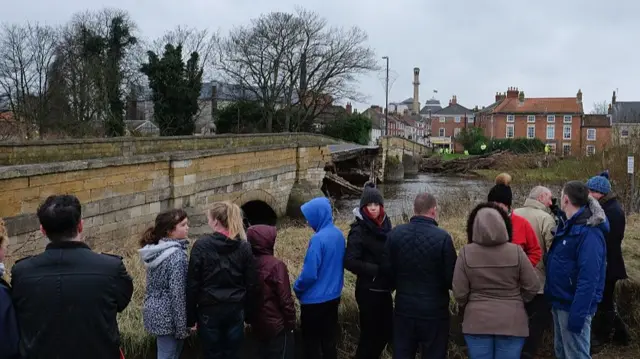
Here’s a claim it has taken a while to get to the bottom of: last week a press release from the Treasury, announcing funding for fixing bridges stated: “nationally, the number of bridge collapses has also risen”.
I got in touch with the government to ask if they collect figures for bridge collapses and they got back to me on Thursday to point me towards research published in 2022 by the RAC Foundation, a transport research policy group.
The foundation had submitted Freedom of Information requests to councils to ask, among other things, about the number of bridges that had collapsed in Great Britain in 2021. The answer was five total collapses and 37 partial collapses. In 2020, there had been 10 full collapses and 30 partial collapses.
The foundation did the same research for 2022 and found there had been no total collapses and 14 partial collapses, so the situation seems to have improved, not deteriorated as the Treasury claimed.
The following year’s report does not mention bridge collapses at all.
I asked the RAC Foundation about this and they warned that comparisons between years are difficult because they do not always get responses from the same councils and the answers are not always consistent between years.
I asked the government why the published results do not support their claim but they have not yet got back to me.

BBC Verify policy and analysis correspondent
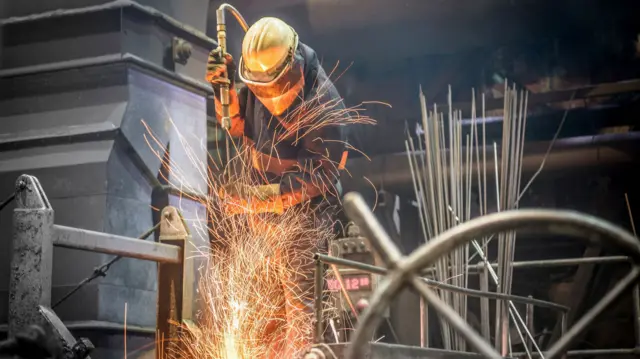
The government’s industrial strategy plan – which we mentioned a bit earlier – says it will “tackle high industrial electricity costs” by exempting energy intensive manufacturing sectors such as steel, chemicals and glass making from having to pay some supplementary electricity charges in order to make them more internationally competitive.
The proceeds from these network charges – such as the Renewables Obligation and Feed-in-Tariffs – are being used to pay for upgrades to the power grid and for its decarbonisation and the government is keeping those objectives in place.
So relieving energy-intensive sectors of these charges (effectively giving them a subsidy) opens up a gap in the government’s finances.
The government has said today this gap will not be filled by raising household energy bills, by tax increases or by higher borrowing.
It says it will come instead from “reforms to the energy system” but it has not specified what these will be.
That raises the possibility that the costs of these subsidies for energy-intensive industries could ultimately be borne by other less energy-intensive businesses – such as retailers – in the form of higher charges and electricity bills than they would otherwise have faced.

BBC Verify senior journalist
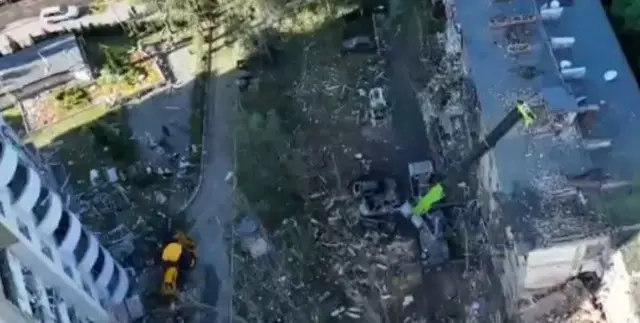
Video footage shared online earlier today shows the aftermath of an attack by Russia on Ukraine’s capital, Kyiv, which has left a number of people dead and several more injured according to the Ukrainian authorities.
One video shows a badly damaged multi-storey apartment block in a residential area, which we located to the Shevchenkivskyi district.
Street view on Google maps confirms the spot where the strike occurred, as the design and layout of the damaged building matches what we can see in the video. An adjacent high-rise building with a white façade, and distinctive semi-circular balconies can also be seen in the matched footage.
A second video shows Kyiv’s mayor Vitali Klitschko walking around the area, featuring the exact same apartment block with part of it heavily damaged. This matches the first video as well as still images from the site taken by news agency photographers.
- Read our news story about the deadly Russian strikes on Kyiv that happened overnight
Benedict Garman
BBC Verify senior journalist
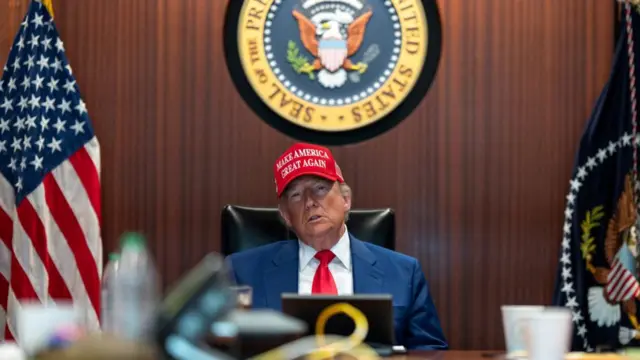
Donald Trump took to his Truth Social earlier today to claim that “Monumental Damage was done to all Nuclear sites in Iran, as shown by satellite images. Obliteration is an accurate term!”
At BBC Verify, we’ve had access to many high resolution and detailed satellite images from companies like Maxar and Planet Labs, which have enabled us to estimate what was struck, where, and how many times.
But because of the nature of the so-called ‘bunker buster’ bombs used by the US military – they detonate deep underground, rather than near the surface – it’s not clear from satellite imagery alone how much damage was done to their subterranean targets.
President Trump’s own military chiefs have been open about this.
When asked about a damage assessment, Gen Dan Caine, chairman of the Joint Chiefs of Staff, said: “It would be way too early for me to comment on what may or may not still be there.”
Meanwhile, Rafael Mariano Grossi, the head of the International Atomic Energy Agency (IAEA), has said “At this time, no one, including the IAEA, is in a position to have fully assessed the underground damage at Fordo”.
But he also said: “Given the explosive payload utilised and the extreme vibration-sensitive nature of centrifuges, very significant damage is expected to have occurred.”
Defence analysts we’ve consulted have echoed these sentiments. Analysts at Janes, a defence intelligence company, tell us that the only people who will be able to ascertain how much damage has occurred at those sites are “on the ground in Iran”.
“And even they will likely not know until they’ve sifted through the rubble.”

BBC Verify senior journalist
One of the entrances to the notorious Evin prison in Tehran was hit in a series of Israeli strikes targeting the Iranian capital today.
CCTV footage authenticated by BBC Verify, also shared by Iranian media and Israel’s foreign minister Giden Sa’ar, shows a blast at one of the entrance doors of the prison.
The sign above the entrance identifies it as Evin prison, which is located in north Tehran and is a familiar site to the residents of the capital.
Many political activists, critics and journalists have been imprisoned there.
A second video, published by Iranian state TV, shows substantial damage to the prison in the aftermath of the blast, with emergency workers sifting through piles of rubble and attending to a number of people injured in the strike.
While confirming the attack, Iranian authorities have swiftly moved to clarify that they maintain full control of the prison.

BBC Verify senior journalist

The wave of misinformation about the Iran-Israel conflict that we reported on over the weekend is showing no signs of subsiding.
One widely circulated image following the US strikes on Iranian nuclear facilities claimed to show an American B-2 bomber after crashing or being shot down in Iran.
But the image has some typical errors consistent with AI generation.
For example, one emergency worker at the bottom left is seemingly merging with the background.
Another AI generated video featuring an allegedly downed B-2 jet, which has been widely circulated on TikTok, shows three soldiers disproportionately bigger than the plane.
According to the US government, all the B-2 bombers used in the bombing of Iran’s nuclear sites returned to the US.

BBC Verify senior reporter
It took months of planning and included over 125 planes, a submarine and 14 “bunker buster” bombs.
Here, I take you through how the US mission “Operation Midnight Hammer” took place and analyse satellite imagery that reveals the damage at Iran’s nuclear sites Isfahan, Natanz and Fordo.

BBC Verify senior journalist

As we mentioned earlier, here at BBC Verify we’re relying heavily on social media posts to find out what’s happening in Iran, but the authorities there are increasingly restricting access to the internet.
Both mobile and fixed-line access has been disrupted for some days, according to the web monitoring group, Netblocks, with only a slight restoration in connectivity on Saturday.
For many Iranians, a way around long-standing restrictions the government has imposed on social media platforms like X, Facebook and YouTube has been to use VPNs (virtual private networks).
But even access to these VPNs is now being heavily obstructed. VPNs encrypt your data and connect you to a remove server – usually abroad – so it looks like you’re online from a different country.
Netblocks says a “handful” of users are still able to get online with “multi hop” VPNs, meaning your online activity is routed through several different remote servers. But they say the authorities are continuing to find ways to detect VPN traffic, so that even these are sometimes disrupted.
State TV warned Iranians last week against using WhatsApp and Instagram, claiming that Israel had access to the personal data of Iranian users and was using it to target them. Meta, which owns both platforms, denied this was the case.

BBC Verify senior journalist
We’re expecting the UK government to announce its 10-year industrial strategy later, which will include a plan to make energy cheaper for selected businesses.
It is expected to cut energy bills for more than 7,000 UK businesses by exempting them from certain extra charges that currently support green energy.
At the moment, the UK has the most expensive electricity for industrial users in Europe, as the chart above shows, driven by high wholesale costs and also policy costs, including things like green levies.
Businesses say this makes it harder for them to compete internationally.
The electricity plan will be among a series of measures that the government hopes will boost growth.
We’ll be keeping across the government’s announcement, but in the meantime, you can read more about it here.
Benedict Garman & Sebastian Vandermeersch
BBC Verify

High resolution satellite images released by Maxar Technologies have given us an overview of damage at two more nuclear facilities targeted by the US: Isfahan and Natanz.
The Isfahan site had already been partly destroyed by Israel before the US attack over the weekend, but satellite photos from Sunday show extensive new destruction – black scorch marks, multiple collapsed buildings, and debris throughout the complex.
Satellite images also show two craters at the Natanz enrichment facility.
We know that two underground facilities were targeted by comparing these recent images and the locations of the craters and the debris with images from 2003, which show the Natanz structures uncovered, before it was buried.
These kinds of crater are consistent with those seen at the Fordo nuclear site, where the US also deployed its GBU-57 “bunker buster” bombs which penetrate deeply before detonating.
Natanz had also been struck by Israel before.
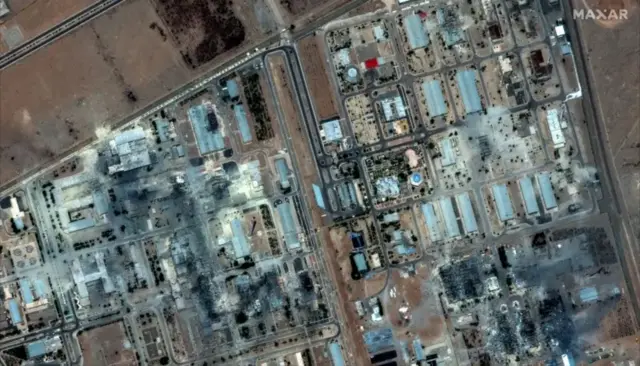

BBC Verify journalist
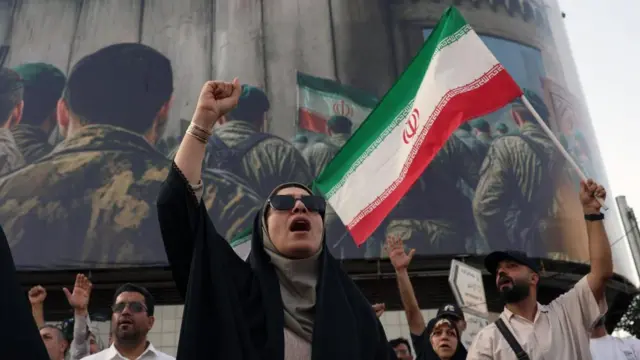
As we’ve been reporting, overnight on Saturday the US confirmed it had bombed three nuclear sites in Iran in an operation that it says was months in the planning.
Among the key outstanding questions are:
- How much damage was inflicted on the sites targeted?
- And how will Iran respond?
We’ll be monitoring user-generated content appearing on social media and satellite imagery for further developments.
After the US attack, Israel and Iran continued to exchange fire on Sunday. In Yazd, central Iran, we verified a video of large explosions. According to Islamic Revolutionary Guard Corps (IRGC)-affiliated Tasnim news agency, nine people were killed in the attack.
The amount of footage coming out of Iran remains relatively sparse. BBC journalists are unable to report from inside Iran due to restrictions by the country’s government, making it difficult to assess the damage.
Also, with internet monitoring organisation Netblocks continuing to report an ‘internet shutdown’ in the country, access to social media videos and images has been very limited.
Benedict Garman
BBC Verify senior journalist
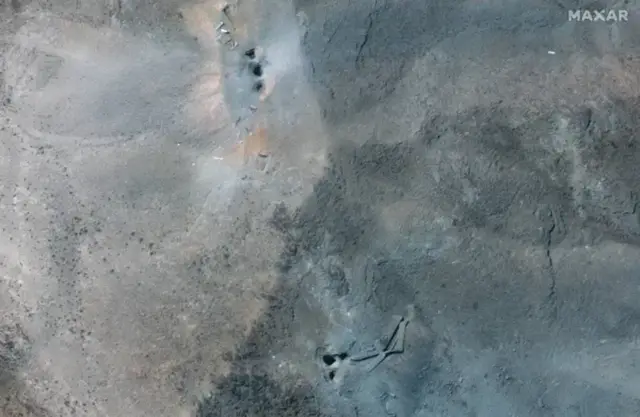
Satellite imagery that we looked at on Sunday shows the aftermath of US strikes on Iran’s underground nuclear enrichment facility at Fordo.
High-resolution images from Maxar Technologies taken 22 June show six craters – likely the entry points for US munitions – as well as grey dust and debris scattered down the mountainside caused by the strikes.
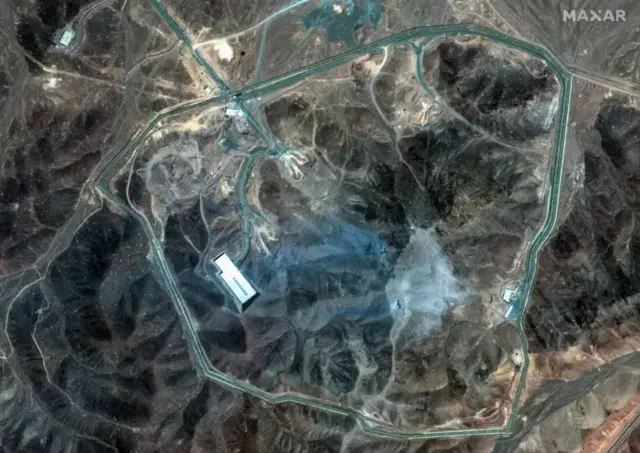
We previously wrote about the type of “bunker buster” munitions required for a strike on a deep underground facility like this: a bomb called a Massive Ordnance Penetrator (MOP). On Sunday, the Pentagon confirmed they were used as part of its operation.
Senior imagery analyst at McKenzie Intelligence Services, Stu Ray, told BBC Verify: “You will not see a huge blast effect at the entry point as it is not designed to detonate on entry but deeper down into the facility.”
He added that it looks like three separate munitions were dropped on two separate impact points, and that the grey colouration on the ground appears to show concrete debris blown out by the explosions.
Ray also said the tunnel entrances appear to have been blocked off. As there are no visible craters or impact points near them, he suggests this may have been an Iranian attempt to “mitigate against deliberate targeting of the entrances by aerial bombardment”.
It’s uncertain how much damage the strikes have caused to the nuclear site itself. In the days leading up to the strike, Iran seem to have been taking actions to anticipate them, as we reported earlier.

BBC Verify Live editor
Good morning from the team in the BBC’s newsroom in London.
You join us more than 24 hours after it was confirmed that the US had carried out strikes on Iranian nuclear sites. This coming more than a week after the conflict between Israel and Iran escalated.
We spent Sunday analysing satellite images, which begin to show the damage from those US strikes – we’ll bring you more of that in our next few posts.
We’re continuing to track developments in the Middle East today, as we try to get a clearer picture of how those strikes have impacted Iran’s nuclear programme.
Our fact-check team is also across the government’s new 10-year industrial strategy – which could see energy bills slashed by up to 25% for more than 7,000 UK businesses – and is set to be unveiled later today.
